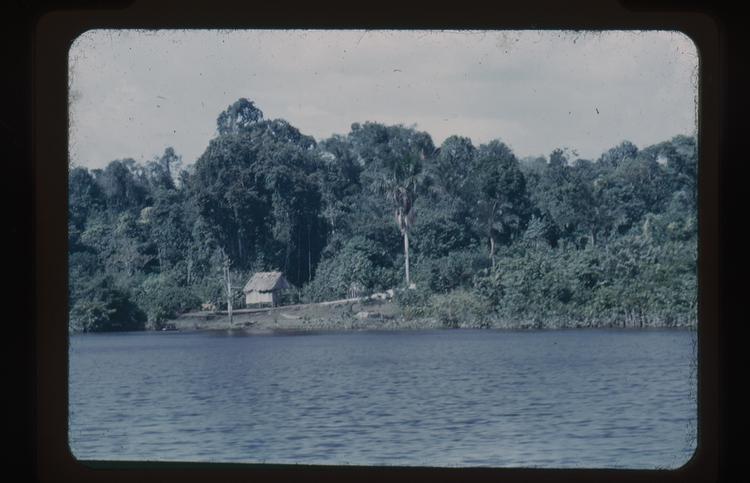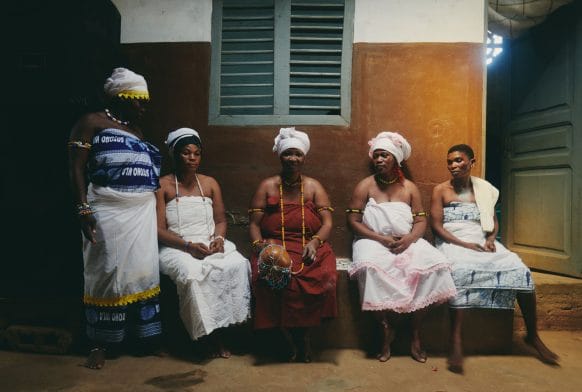
Community Commentary by Ashiyanbi, Akeem Abiodun within research project: 'Rethinking Relationships and Building Trust around African Collections' 2021
The picture depicts two grown men playing the popular rectangular shaped local ayo game. The board game comes in rectangular form but there are a few exceptions that come in circular forms with surface decorations. The carved board is decorated with pyro engravings which is indicative of the fact that carved objects are hardly ever left unadorned. Ayo Olopon is a traditional game popular among the Yoruba people of western Nigeria. It is a game that requires a lot of brain power and much mathematical skill. Ayo is played in a carved wooden box, containing twelve holes (six holes on each side), and forty-eight Ayo seeds (four seeds in each hole). It is similar to the Oware game which is a variant prolific across the Americas, that was originally introduced by slaves from Africa. It is also similar to mancalas, which is derived from the Warri people of Nigeria. The game is Yoruba in origin as other variances have historical attachment to the Yoruba who are ancestral cousins to the Warri whose forefathers (with the Yoruba) were traded during the Atlantic Slave Trade. It also has identical rules with Endodoi, a game played by the Maasai people of Kenya and Tanzania. The art of playing Ayo is called Ayo tita. In Yoruba communities the game is usually played in the evening after the day's work. It is a general belief that only lazy men play the game in the morning. Children are encouraged to learn to play Ayo early in life as a cultural heritage that must be passed on from generation to generation. The game is played in a carved wooden box, containing twelve holes (six holes on each side), and forty-eight seeds (four seeds in each hole), and can accommodate only two players at a time.
Two individuals take turn to play the game moving in an anti-clockwise direction. The first player begins by moving seeds from his right hand side to the opponent’s side. If the seed-movement terminates in a hole with three or less seeds, this player picks up the seeds, and those from preceding holes, if any. Players take turn until the seeds are exhausted. The player with the highest number of seeds is the winner and is called Ọta while the loser of the round played is called Ope. Spectators’ comments and banters on the direction of the game are often added colours in the encounter. When a person is passing by two people playing this game, it is customary to greet the players by saying “Mo ki ota, mo ki ope o,” which means “I greet the winner and I salute the loser too.” To this greeting, only the ota, meaning “the winner responds, the loser dares not”. Any player that record three straight wins becomes an Ota champion. (Ọta means bullet). The loser (Ope means 'knowledgeable') quits at this stage and a new player takes over. The Ayo game requires deep thought, and good strategy to move seeds with the ultimate aim of winning. This game, though originally played only by men, is now enjoyed by everyone. The meeting point is usually under a big tree with shade or on the verandah of the house. Today, Ayo has been adopted worldwide and is played at international level.



































































































































































































































































































































































































































































































































Community Commentary